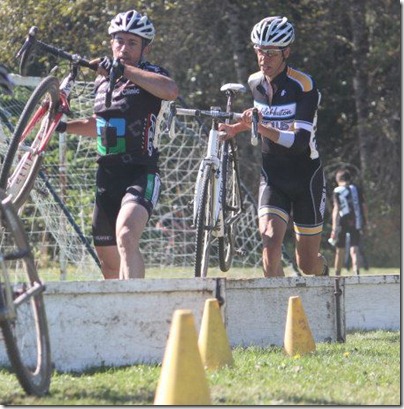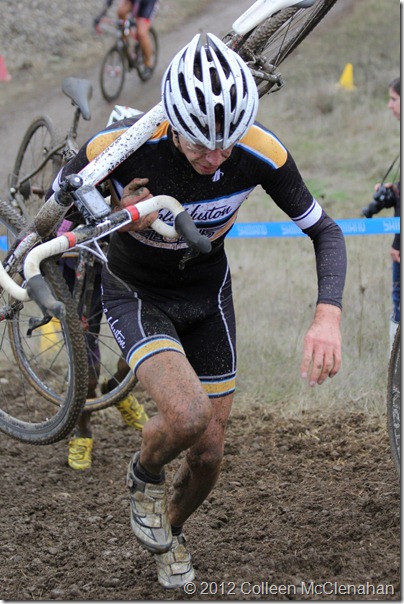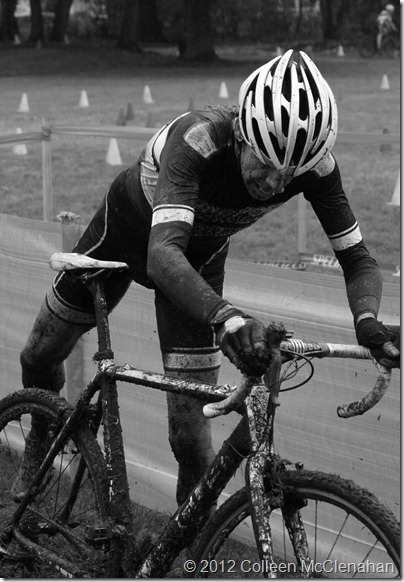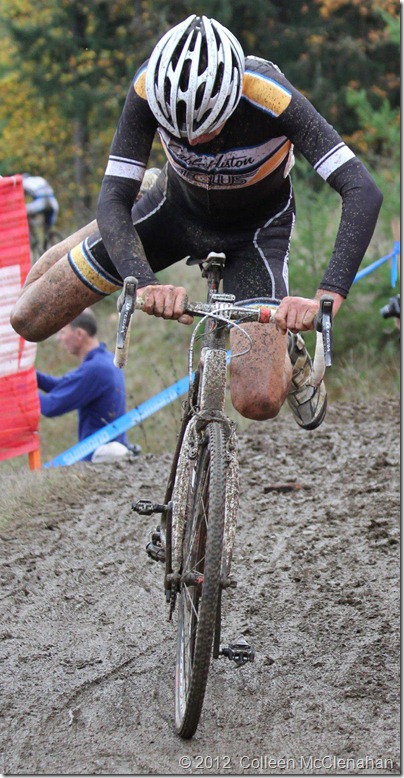Cyclocross Basics, Part 2
Cyclocross is great training for cycling and in endurance coaching circles, widely respected as not only a winter training sport, but a specialty in and of itself. It is technique-heavy, as cycling disciplines go, so it's a good place for roadies and the like to keep their skills sharp. A few weeks ago, we covered the basics of cyclocross training and technique. Now, we'll delve into one of the more difficult aspects of technique - dismounting, carrying and getting back onto your bike. Of course, the best way to learn this is with the hands-on instruction of a coaching ride.
The key to developing good bike handling skills is to practice being smooth and relaxed. Your dismount, transition to carry, return of the bike to the ground, and remount should feel like one fluid motion. At first, it will likely feel like the opposite, but this smoothness is something to strive for. Let's go over the specifics:
Dismounts:
The key to dismounts, like comedy (which sometimes results), is timing. The speed of approach, type of obstacle, and traction conditions all play a role in deciding when to dismount. It's generally best to ride as close to the obstacle as practical, or in the case of a run-up as far up it as practical. Some riders like to set their brakes up "Italian-style," with the rear brake on the left, so that they can eliminate the chance of locking the front wheel in loose terrain while they are halfway off the bike. Let's outline the steps, one at a time:
- Gauge your speed appropriately and slow down smoothly as you approach the obstacle
- Swing your right leg over the saddle and bring it behind your left leg
- Square your hips with the handlebars - perpendicular to the frame of the bike
- As you continue to slow down, release your right hand from the handlebar and grab your top tube, pushing your weight into it to offload weight from your feet
- Twist your left foot free of the pedal as you land on your right foot first (behind your left foot). Alternatively, you can "step-through"- instead of planting your right foot behind the pedal, step between your left leg and the bike and land in a run with your right foot in front.
- Pick up your bike!
 |
| The dismount. Notice the weighted hand on the top tube |
Carry:
There are two main ways to carry your bike: the "suitcase" carry and the shoulder carry. For short sets of barriers or stairs, the suitcase usually will suffice. For longer run-ups and triple barriers, it's better to shoulder your bike.
Suitcase-style Carry:
This one is easy. Once you have stepped off your bike, with your left hand on the brake hood and your right hand on the top tube, simply pick the bike up, like a suitcase. It's best to avoid the temptation to tuck it close to your body. You can love your bike, but this is a good time to keep it at arm's length. Also, you only need to lift it high enough to clear the obstacle. Riders often lift their bikes higher than necessary, thereby wasting valuable energy. As long as the wheels clear the obstacle, that's enough.
 |
| The rider in front is lifting his bike higher than necessary, while the second rider just clears the barrier – saving a bit of energy along the way |
Shoulder Carry:
This one is slightly more complicated, but still not hard. The dismount is very similar to the above, unless it's really smooth, in which case you may be able to skip grabbing the top tube and simply pick the bike up by the down tube as you dismount.
- Gauge your speed appropriately and slow down smoothly as you approach the obstacle
- Swing your right leg over the saddle and bring it behind your left leg
- Square your hips with the handlebars - perpendicular to the frame of the bike
- As you continue to slow down, release your right hand from the handlebar and grab your top tube, pushing your weight into it to offload weight from your feet
- Twist your left foot free of the pedal as you land on your right foot
- As you begin to run, release the top tube, reach down on your side of the bike, and pick up your bike by the down tube. Slide the top tube up your arm to rest on your shoulder with your arm under the down tube. Do this in one smooth motion, ending with your right hand holding the bottom of the handlebar
- Tuck your right hand into your chest - this will keep your saddle from hitting your helmet
- Run, using your left hand for balance if necessary.
 |
| Running with the bike on the shoulder. Notice how the right arm is wrapped under the down tube and the hand holds the end of the handlebar |
Remount:
This is basically an exaggerated "step" onto the bike. Ideally, it is less of a jump and more of a smooth slide over the bike and back into the pedals. The key to this, as with the above, is to be as smooth and fluid as possible. Here is the breakdown:
- After placing your bike back on the ground as smoothly as possible while you run, step off your left foot as you begin to bring your right leg over the saddle
- Envision simply placing your right foot back into the right-side pedal. Aim for it
- Slide your right thigh over the saddle, still aiming for the pedal with your foot
- Find your pedals, clip in, and keep pedaling!
 |
| Stepping onto the bike. It doesn't look like I am running in this photo, but I am! |
 |
| Sliding into the saddle |
All of these techniques require practice to master. You will know you have it right when you're racing and not even thinking about the next obstacle or what you are going to do to get over it. Focus on staying relaxed and strive for smoothness and fluidity. The smoother you are, the faster you will be.



